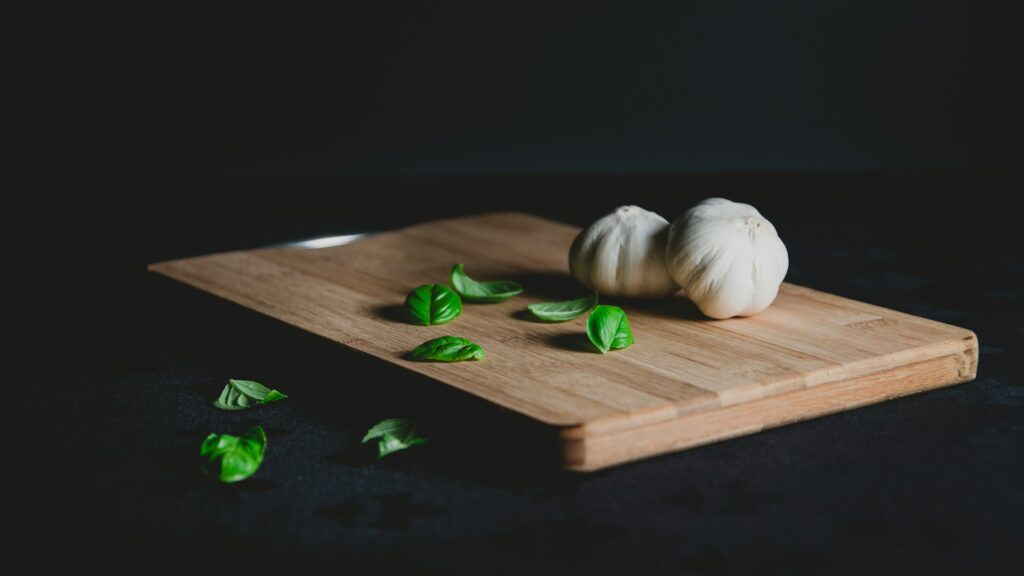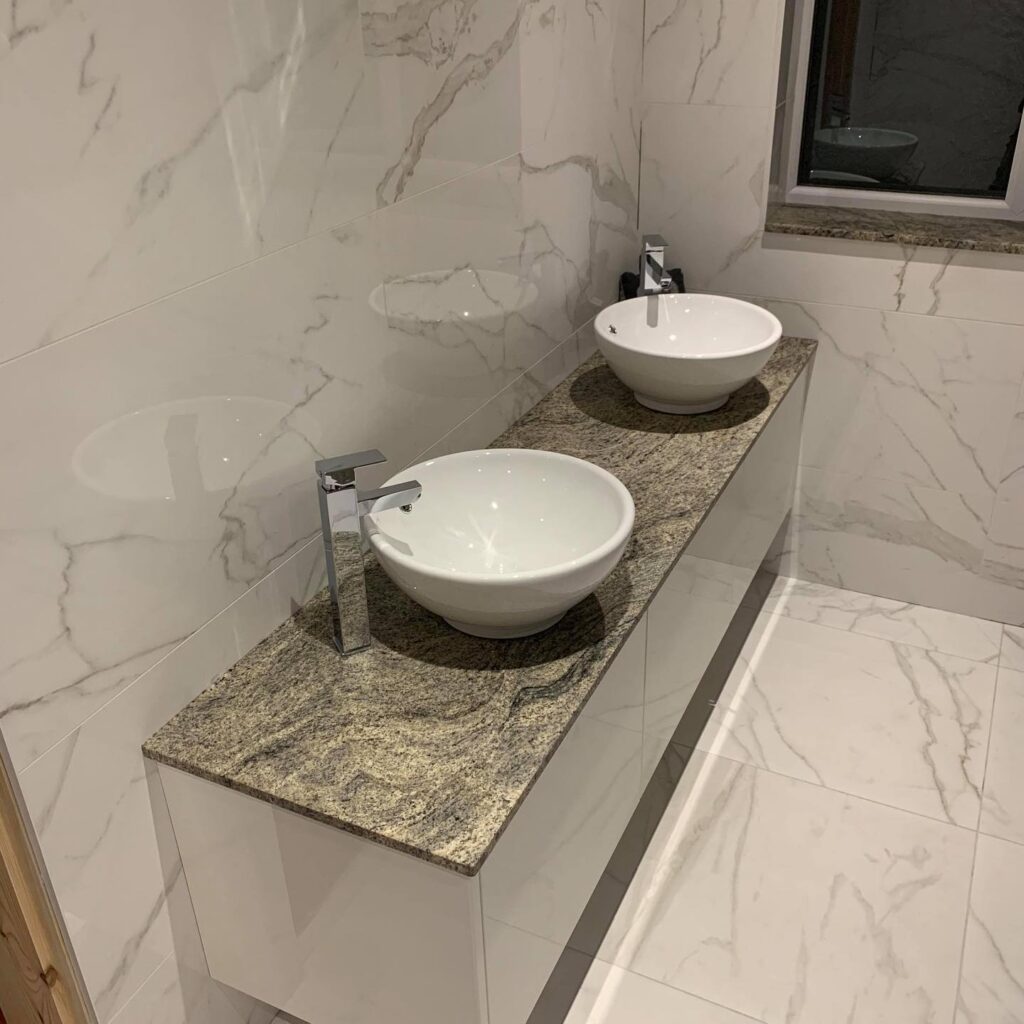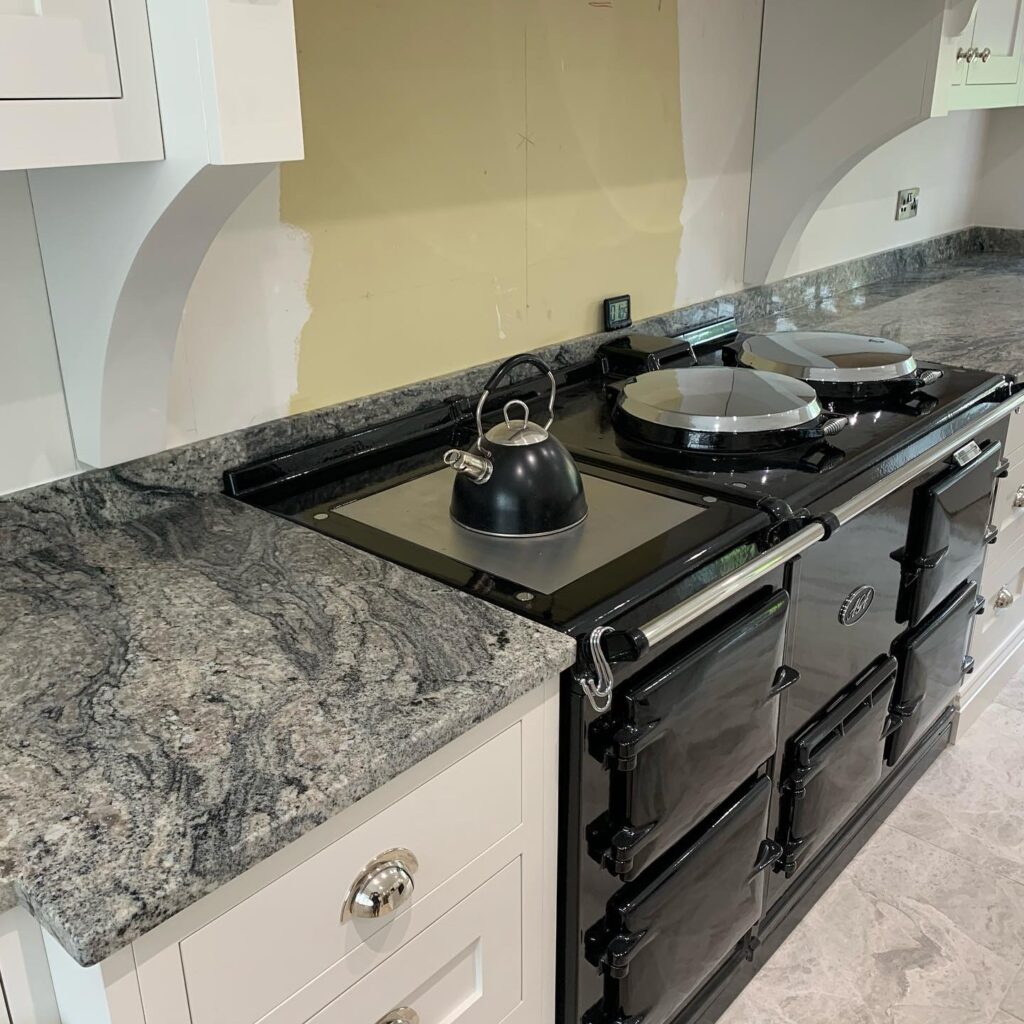Why Do Granite Worktops Lose Their Shine?
Granite is a tough, long-lasting material, but it’s still susceptible to wear and tear. Here are some common reasons why your worktops may appear dull:
1. Using the Wrong Cleaning Products
Many everyday household cleaners contain harsh chemicals that can strip away the protective sealant on granite. Products containing bleach, vinegar, or ammonia can erode the surface, leaving it dull and vulnerable to stains.
🔹 Solution: Stick to a pH-neutral, granite-safe cleaner or simply use warm water with mild dish soap.
2. Build-Up of Soap Residue
Even if you’re using a mild cleaner, excessive use of soap can cause a film to build up, making the surface appear cloudy or lacklustre.
🔹 Solution: Wipe down your worktops with a damp microfibre cloth after cleaning to remove any soap residue.

3. Worn or Damaged Sealant
Granite is naturally porous, which means it requires sealing to maintain its resistance to stains and moisture. Over time, the sealant can wear down, allowing dirt and grime to penetrate the surface, making it appear dull.
🔹 Solution: Perform a water droplet test by placing a few drops of water on the surface. If the water absorbs within 5 minutes, it’s time to reseal your granite worktops.
4. Scratches & Etching
Though granite is scratch-resistant, small scratches from cutting directly on the surface or using abrasive cleaning tools (like scouring pads) can create tiny grooves that dull the shine.
🔹 Solution: Always use a chopping board when preparing food, and avoid scrubbing with rough sponges or steel wool.

5. Hard Water Stains & Limescale Build-Up
In areas with hard water, limescale deposits can form on granite surfaces, especially near sinks. This leaves white, chalky streaks that dull the natural shine.
🔹 Solution: Use a 50/50 mixture of water and rubbing alcohol to gently remove limescale. Avoid using vinegar, as its acidity can damage the granite.
How to Restore the Shine to Your Granite Surfaces
If your granite surfaces have lost their lustre, follow these simple steps to bring back their natural shine.

Step 1: Deep Clean the Surface
- Mix warm water and a few drops of mild dish soap.
- Use a microfibre cloth to wipe the entire surface.
- Rinse with clean water and dry with a soft towel.
Step 2: Remove Stubborn Residue
If there’s a filmy build-up or dull spots, try this method:
- Mix one part rubbing alcohol with three parts water and add a few drops of dish soap.
- Spray the solution on the granite and wipe with a microfibre cloth.
- Buff with a dry cloth for a streak-free finish.

Step 3: Polish with a Granite-Safe Polish
For an extra shine boost:
- Use a granite-specific polish (avoid generic furniture polish as it may contain wax that creates buildup).
- Apply the polish sparingly and buff with a dry, soft cloth to restore the glossy finish.
Step 4: Reseal the Granite (If Needed)
If your worktops are still looking dull after cleaning, the sealant might be worn out. To reseal:
- Clean the surface thoroughly.
- Apply a granite sealer evenly with a soft cloth.
- Allow it to absorb for 15-30 minutes.
- Wipe off any excess and let it cure for 24 hours before use.
Most granite worktops should be resealed once a year, but high-use areas may need it more frequently.

How to Keep Your Granite Worktops Looking Shiny
- Clean daily with warm water and a soft cloth.
- Avoid harsh chemicals like vinegar, bleach, and ammonia.
- Use chopping boards instead of cutting directly on granite.
- Wipe spills immediately to prevent stains.
- Dry surfaces after cleaning to avoid water spots.
- Reapply sealant annually to protect the surface.



